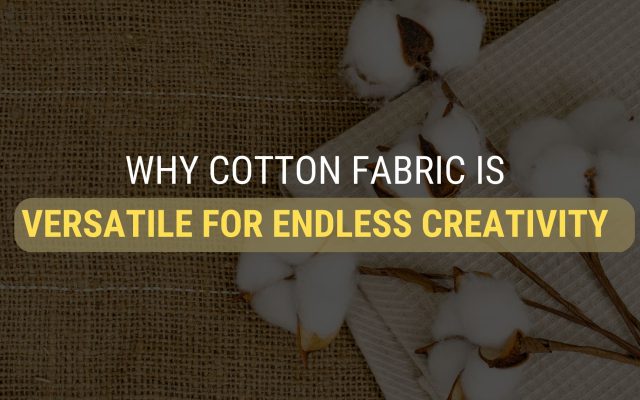Introduction
The textile industry has undergone a significant transformation in recent years, driven by the rise of online textile platforms. Businesses and individual buyers now have access to a diverse range of fabrics at their fingertips, making traditional fabric sourcing methods increasingly obsolete. The ability to buy textiles online has introduced unmatched convenience, transparency, and efficiency, reshaping how fabric sourcing works.
This article delves into why online textile shopping is the future and how it benefits buyers and businesses alike.
The Rise of Online Textile Shopping
The adoption of digital platforms in the textile industry has revolutionized the buying process. Here’s why online textile shopping is on the rise:
1. Convenience and Accessibility
First and foremost, buyers can browse and order fabrics from the comfort of their homes or offices. As a result, time-consuming visits to physical markets are no longer necessary.
2. Diverse Product Range
Moreover, online platforms offer a wide variety of textiles, from cotton and silk to technical and eco-friendly fabrics, ensuring that every buyer finds what they need.
3. Competitive Pricing
In addition, by eliminating intermediaries, online platforms enable buyers to source fabrics at competitive prices, making them more accessible.
4. Transparency in Transactions
Furthermore, online stores provide detailed product descriptions, customer reviews, and supplier ratings, ensuring informed decisions.
5. Global Reach
Lastly, buyers can connect with suppliers worldwide, opening opportunities for international trade and collaboration.
Why Online Textile Shopping is the Future
1. Time-Saving
For starters, online platforms streamline the sourcing process, allowing buyers to place orders quickly and efficiently.
2. Improved Supply Chain Management
Moreover, digital platforms optimize the supply chain, reducing delays and ensuring timely deliveries.
3. Eco-Friendly Options
As sustainability becomes a priority, the growing demand for eco-friendly fabrics is easily met by online platforms that highlight organic and recycled options.
4. Customization and Flexibility
In addition, buyers can request customized fabrics, including specific colors, patterns, and finishes, catering to unique project requirements.
5. AI-Powered Recommendations
Similarly, advanced online platforms use artificial intelligence to recommend fabrics based on buyer preferences, making the shopping experience seamless.
Advantages of Buying Textiles Online
1. Cost-Effectiveness
- Direct access to suppliers reduces intermediary costs.
- Discounts and bulk purchasing options lower expenses for businesses.
2. Quality Assurance
Furthermore, verified suppliers ensure high-quality products, and sample requests allow buyers to check fabric quality before bulk purchases.
3. Endless Variety
Moreover, access to traditional fabrics like silk and khadi alongside modern materials like technical textiles meets diverse demands.
4. Easy Comparison
In addition, buyers can compare prices, quality, and reviews across multiple suppliers to make informed choices.
5. Secure Payment Systems
Lastly, reputable platforms provide secure payment gateways, ensuring financial safety for buyers and sellers.
Challenges in Online Textile Shopping
While online textile shopping offers numerous benefits, it’s not without challenges:
1. Limited Physical Inspection
Buyers cannot touch or feel the fabric before purchase.
- Solution: Therefore, request samples from suppliers to assess quality.
2. Shipping Delays
Logistics issues can lead to delayed deliveries.
- Solution: Hence, opt for platforms with reliable logistics partners and tracking systems.
3. Risk of Fraudulent Suppliers
Unverified suppliers may lead to subpar products.
- Solution: Thus, use trusted platforms with verified supplier networks.
Future Trends in Online Textile Shopping
1. Blockchain Technology
Blockchain ensures transparency in the supply chain, allowing buyers to trace the origin and authenticity of fabrics.
2. Virtual Reality (VR) Showrooms
Moreover, VR technology will enable buyers to view and inspect fabrics digitally, enhancing the shopping experience.
3. Sustainability Focus
As eco-consciousness grows, the demand for organic and recycled textiles will increase, driving innovation in this space.
4. Global Collaboration
Online platforms will foster greater collaboration between buyers and suppliers across borders, boosting international trade.
5. AI Integration
Lastly, artificial intelligence will improve fabric recommendations, streamline searches, and enhance customer experiences.
Tips for Successful Online Textile Shopping
- Choose Verified Platforms: Opt for trusted websites like TEXchange Global with verified suppliers.
- Request Samples: Evaluate fabric quality before placing bulk orders.
- Compare Options: Check multiple suppliers for pricing, reviews, and variety.
- Understand Policies: Review shipping, return, and refund policies carefully.
- Communicate with Suppliers: Clarify specifications, customization needs, and delivery timelines.
Conclusion
The rise of online textile platforms is reshaping the fabric sourcing industry, offering buyers unprecedented convenience, variety, and transparency. By making it easier to buy textiles online, these platforms cater to the needs of modern businesses and individual buyers alike.
With trusted platforms like TEXchange Global and IndiaMART, sourcing high-quality textiles has never been more accessible. Therefore, the future of fabric sourcing lies in digital innovation, and online textile shopping is leading the way. Start exploring today and experience the transformation for yourself!




